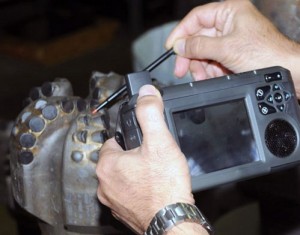‘Virtual presence’ technology enhances productivity safety
Landale Cranfield, regional wells skillpool advisor for Sarawak Shell Berhad, demonstrated a virtual presence technology during a presentation at the 2012 IADC Drilling HSE Asia Pacific Conference on 26 April in Singapore. In the first video, a connection was made with employees at a Singapore yard, showing how the real-time technology can be used to pinpoint BOP issues. In the second video, a connection to an office in Canada showed how the technology can be used for HSE inspections, investigations and verifications.
[flv flashvars=”file=https://drillingcontractor.org/wp-content/uploads/2012/05/video-shella-05042012.flv&&image=https://drillingcontractor.org/wp-content/uploads/2012/05/poster-shella-05042012.jpg&width=555&width=256″]https://drillingcontractor.org/wp-content/uploads/2012/05/video-shella-05042012.flv[/flv]By Katie Mazerov, contributing editor
Virtual technology is making the oil patch smarter. Driven by the continued push into unconventional and deepwater environments and the anticipated Big Crew Change, Shell is using a virtual presence system that provides real-time communication between rig personnel and technical experts thousands of miles apart. y Using an explosion-proof camera, a satellite and laptop computer or tablet, the technology is proving beneficial for reducing risk and nonproductive time (NPT), especially for the company’s operations in remote or hazardous locations, said Landale Cranfield, regional wells skillpool advisor (UIA) for Sarawak Shell Berhad.
“We need to use the expertise we have in a smarter way, and this is a technology that can help us achieve that,” Mr Cranfield said in a presentation at the 2012 IADC Drilling HSE Asia Pacific Conference & Exhibition in Singapore, 25-26 April. “Over the years, most of the skills we’ve needed were in traditional oil and gas locations, with workers clustered in key locations,” Mr Cranfield said. “But with the Big Crew Change coming, experienced people on location will be leaving the industry. There is a mismatch between the location of skills and ‘new’ oil and gas locations.”
At the same time, there is less interest in sending technical experts to remote and/or hostile locations. “With smart well technology, we’re doing things more efficiently, but if something goes wrong on a rig, we still sometimes have to wait several days for the experts to arrive,” he continued. “We need to bring workflows and information to the professionals instead of doing it the other way around. Virtual presence completes the loop.”

Initially launched by Shell Brunei, the company finds the system has potential for operations throughout Southeast Asia and ultimately across the entire Shell group of companies, from offshore platforms to remote jungle locations, Mr Cranfield said. “Implementation of this system can reduce travel costs, improve health, safety, security and environment performance and allow experts to be available when required to advise on repairs to broken equipment, hence reducing downtime and improving availability of equipment.”
Completing the loop
To demonstrate how the system works, Mr Cranfield made a live connection during his presentation with a Shell employee’s camera on a rig in the Cameron yard in Singapore to show how issues with the blowout preventer (BOP) can be resolved. Using real-time streaming multimedia via WiFi, images and information about the BOP operation can be transmitted from the workplace back to an expert, or group of experts, who can view the situation on a laptop.
Another live connection, this one with an operation in Canada, showed how as-built drawings can be transmitted to rig personnel to ascertain whether equipment, such as piping, is up to date and being built correctly. “In this way, the system can be used for HSE inspections, investigations, and to verify the systems on the rig and what the workers are doing,” Mr Cranfield explained. “This is especially important with the large number of people coming into the industry whose experience levels are not as high.”
The virtual presence technology also has potential for field-based training and staff development, particularly in locations where access is difficult, Mr Cranfield said. Information also can be recorded and used to develop training videos.
Although not currently approved for Zone 1 environments (operations with the presence of hazardous gas), industry demand could drive the development of that capability, he said. Security provisions are being built into the system to help ensure the establishment of onshore connectivity through company firewalls. “Information technology personnel need to get their minds around the whole idea of data streaming and information security,” he noted.
But mindset stands as the biggest threat to industrywide adoption, Mr Cranfield believes. “This system is designed to help people do their jobs better. It involves accepting new ways of working, both onsite and by the experts.”




